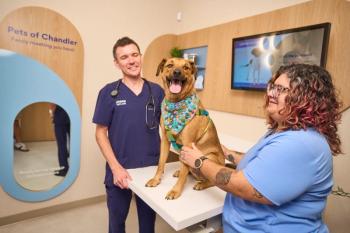
Internal parasite control guidelines for horses are updated
The American Association of Equine Practitioners’ guidelines offer information on reducing the risk of parasitic diseases in horses, anthelmintic resistance, and more
The Internal Parasite Control Guidelines by the American Association of Equine Practitioners (AAEP) have been revised. The revised guidelines aim to reduce the risk of parasitic diseases in horses and extend the effectiveness of existing medications by slowing the development of anthelmintic resistance.1
“The true goal of parasite control in horses is to keep animals healthy and reduce the risk of clinical illness. The goal is NOT to eradicate all parasites from a particular individual. Not only is eradication impossible, the inevitable result of pursuing this goal is accelerated development of parasite drug resistance,” wrote the AAEP in its 34-page guidelines.2
The document was last updated in 2019, and now includes information on recent advancements in knowledge of heightened anthelmintic resistance and the improvement of parasite control management practices. The guidelines also clarify common misconceptions and provide tailored parasite control recommendations for senior horses aged more than 15 years old, mature horses between 5 and 15 years old, and young horses under 5 years old.1
Divided into 10 sections, the guidelines also provide information on2:
- Various common parasites and parasitic diseases in equines
- Parasite diagnostics and their performance
- Anthelmintic treatment evaluation, including how to interpret a fecal egg count reduction test (FECRT)
- Larvicidal treatment
- Strongyle egg reappearance periods
- Recommendations for parasite control programs
According to the guidelines, 6 changes worth making are checking anthelmintic efficacy routinely by fecal egg count reduction testing, not deworming with fixed intervals year-round, abandoning rotational deworming, reducing anthelmintic treatment frequency, and tailoring strongyle parasite control to the active transmission season. The AAEP also emphasizes not using fecal egg counts to diagnose clinical disease.2
“Take-home” messages outlined in the guidelines include2:
- Perform FECRTs annually to ensure that you are using effective dewormers in every herd or barn.
- Recognize that no anthelmintic will eliminate all parasitic stages from a horse.
- Continue using fecal egg counts (FEC) once or twice a year to stratify horses into low, medium, and high shedders to reduce pasture contamination.
- Deworm all horses at a baseline rate (once or twice a year) and target selected horses more often based on FEC (strongyle high shedders).
- Do not use FEC to diagnose disease in horses; there is no correlation between FEC and disease-causing parasite life stages.
- Discontinue deworming all horses with fixed intervals year-round (e.g., every 2 months), and stop blindly rotating anthelmintic classes.
“We have seen dramatic development in the field of equine parasite control over the past 10 years, since we first launched these guidelines, and we work hard to keep our recommendations up to date,” Martin Nielsen, DVM, PhD, DrVetSci, and chair of the AAEP task force said in a statement, according to the American Veterinary Medical Association (AVMA).1
Alongside Nielsen, the task force included 10 AAEP members, most of whom are board-certified in veterinary internal medicine, parasitology, or microbiology. The revised guidelines were reviewed and approved by the AAEP Infectious Disease Committee and the board of directors, according to the AVMA.1
References
- AAEP updates internal parasite control guidelines. News release. American Veterinary Medical Association. August 8, 2024. Accessed August 9, 2024.
https://www.avma.org/news/aaep-updates-internal-parasite-control-guidelines?utm_source=delivra&utm_medium=email&utm_campaign=todays-headlines-news - AAEP Internal Parasite Control Guidelines. American Association of Equine Practitioners. Accessed August 9, 2024.
https://aaep.org/wp-content/uploads/2024/05/Internal-Parasite-Guidelines_Final1.pdf
Newsletter
From exam room tips to practice management insights, get trusted veterinary news delivered straight to your inbox—subscribe to dvm360.






